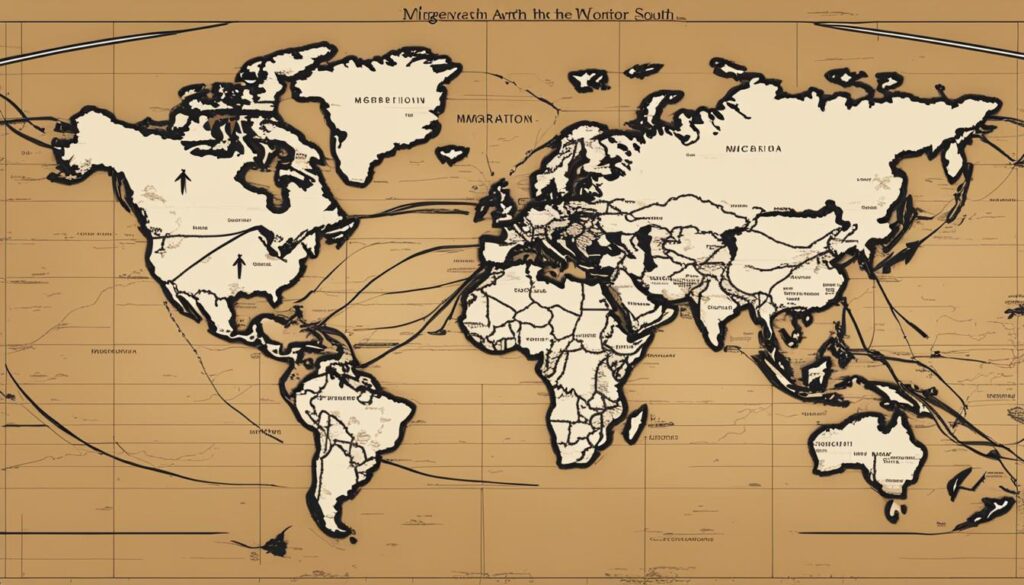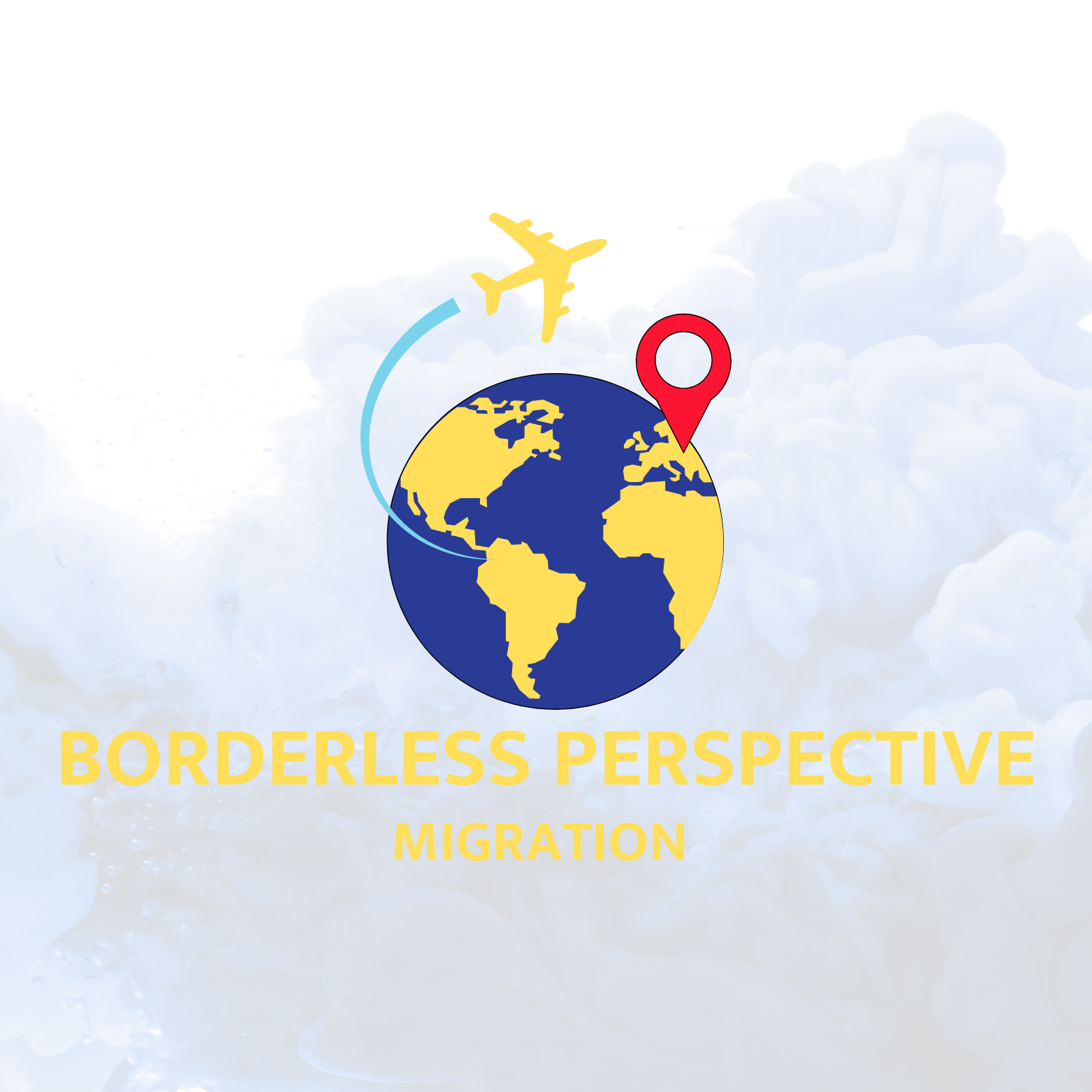
In today’s globalized world, migration dynamics are undergoing a significant transformation. The traditional pattern of South-North migration is being overshadowed by the rise of South-South movements. This shift in global migration patterns has important implications for understanding international migration, analyzing migration statistics, and formulating effective migration policies.
Research has revealed that approximately one-third of all international migratory movements now occur between countries in the Global South. This represents a substantial change in the landscape of global migration. To gain a comprehensive understanding of migration trends, it is crucial to consider North-South, South-South, and North-North migration flows.
This analysis highlights the influential role of endogenous network effects in shaping migration flows. It challenges the notion that non-network covariates, such as income and political instability, consistently explain migration dynamics. Furthermore, the study emphasizes the significance of examining migration flows beyond commonly studied migratory corridors and regions.
The increasing importance of South-South migration is evident in the rise of economic blocs like BRICS and CIVETS, which are attracting population growth and migration. Recognizing and comprehending the changing migration dynamics is essential for developing effective migration policies that address the factors influencing these trends.
Key Takeaways:
- The shift from South-North to South-South migration is transforming global migration patterns.
- About one-third of international migratory movements now occur within the Global South.
- Endogenous network effects play a significant role in the emergence and evolution of migration flows.
- Non-network covariates, such as income and political instability, do not consistently explain migration dynamics.
- Migration flows should be analyzed beyond commonly studied migratory corridors and regions.
The Rise of South-South Migration
South-South migration has emerged as a significant trend in the changing dynamics of global migration. Contrary to traditional South-North migration patterns, more people are now migrating within the Global South than from the Global South to the Global North. This paradigm shift in migration highlights the demographic and economic growth of emerging market economies within the Global South.
In 2016, South-South migration accounted for 38% of total global migration, surpassing South-North migration. This trend signifies the increasing importance of migration patterns within the Global South. Countries in the BRICS and CIVETS blocs have become major destinations for migrants, attracting population growth and capital investment. These emerging market economies offer stable economic conditions, low inflation, and promising prospects for employment and entrepreneurship.
Remittance flows within the Global South have also seen a significant rise, indicating the economic impact of South-South migration. Countries like India, China, Mexico, the Philippines, Nigeria, and Egypt receive substantial remittance amounts from migrants working in other countries within the region. However, it is important to note that transaction costs for South-South remittances are higher compared to other migration corridors, affecting the amount of money reaching the recipients.
The Impact of South-South Migration on Development
The rise of South-South migration calls for a shift in the discourse on migration, recognizing the economic potential and development impact of migration within the Global South. By focusing on the opportunities and challenges posed by South-South migration, policymakers can develop inclusive migration policies that foster equitable development.
| Global Migration Trends | Migration Corridors | Remittance Flows | Emerging Market Economies |
|---|---|---|---|
| Increasing South-South migration | Rising importance within the Global South | Significant remittance amounts | Attracting population growth and investment |
“South-South migration not only contributes to economic growth but also enables knowledge transfer, cultural exchanges, and social integration within the Global South.” – Migration Scholar
Recognizing the importance of South-South migration and its impact on development is crucial for fostering sustainable growth and addressing regional inequalities. By acknowledging the potential of migration within the Global South, policymakers can create an enabling environment that maximizes the benefits of migration while safeguarding the rights and well-being of migrants.
Decolonising the Migration Narrative
The prevailing media narratives and scholarly research on migration have long centered around South-North migration, overlooking the significance of South-South migration in terms of development, inequality, and humanitarian crises. This skewed narrative is primarily driven by media, politicians, and researchers from the Global North, resulting in policy implications that restrict mobility within the Global South and ignore the potential benefits of South-South migration.
By predominantly focusing on the so-called “root causes” of migration from the Global South to the Global North, such as poverty and political issues, policies have inadvertently marginalized the urgent need to address migration within the regions of the Global South itself. This mismatch between policies and the reality on the ground has led to restricted mobility, missed opportunities for development, and a lack of protection for migrants within the region.
To rectify these disparities, it is essential to decolonize the migration discourse by shifting the production of knowledge towards the Global South. This can be accomplished by fostering collaboration between scholars from both the Global South and the Global North, thus ensuring a more comprehensive and accurate understanding of migration patterns, factors, and impacts. By working together and transcending the bias of current media narratives and research, we can reshape the story of migration, shedding light on the crucial importance of South-South migration and addressing the inequalities and misconceptions that surround it.
Understanding the role of South-South migration is an important step towards developing holistic migration policies that promote equitable development and foster a more inclusive society across the Global South. By challenging the existing narrative and embracing a decolonized perspective, we can pave the way for a more just and inclusive future, where migration is seen as a catalyst for positive change and empowerment.
FAQ
How have migration dynamics changed in recent years?
Migration dynamics have shifted from South-North migration trends to prevalent South-South movements. Research shows that about a third of all international migratory movements now take place between countries in the Global South.
What factors influence migration dynamics?
The analysis of migration flows from 184 countries over 25 years has highlighted the importance of understanding both North–South, South–South, and North–North migration flows. Endogenous network effects and non-network covariates such as income and political instability play significant roles in the emergence and evolution of migration flows.
What is the significance of South-South migration?
South-South migration has become a significant phenomenon in changing migration dynamics. More people migrate within the Global South than from the Global South to the Global North. It surpasses South-North migration, accounting for 38% of total migration in 2016.
Are there any economic blocs attracting migration within the Global South?
Yes, economic blocs like BRICS and CIVETS have become major destinations for migration due to their rapid population and economic growth, stable economies, and low inflation and debt.
What is the impact of South-South remittance flows?
Remittance flows within the Global South have been on the rise, with countries like India, China, Mexico, the Philippines, Nigeria, and Egypt receiving significant amounts. However, transaction costs for South-South remittances are higher compared to other migration corridor types, impacting the amount of money reaching the recipients in the Global South.
Why is there a need to shift the discourse on migration?
Media narratives and scholarly research have predominantly focused on South-North migration, neglecting the importance of South-South migration in development, inequality, and humanitarian crises. Shifting the discourse is necessary to recognize the economic potential and development impact of migration within the Global South.
How can the production of knowledge on migration be decolonized?
To decolonize the story of migration, collaboration between scholars from the Global South and the Global North is essential. This ensures a more comprehensive and accurate understanding of migration patterns, factors, and impacts, reshaping the narrative and addressing the inequalities and misconceptions surrounding migration.
What can understanding the role of South-South migration contribute to?
Understanding the role of South-South migration contributes to a more holistic approach to migration policies and promotes equitable development across the Global South.
MORE SOURCES TO READ:
- https://www.thecairoreview.com/global-forum/the-global-souths-new-migration/
- https://www.thenewhumanitarian.org/interview/2021/7/8/why-south-south-migration-has-long-been-overlooked
- https://appliednetsci.springeropen.com/articles/10.1007/s41109-020-00322-x
![]()











Recent Comments